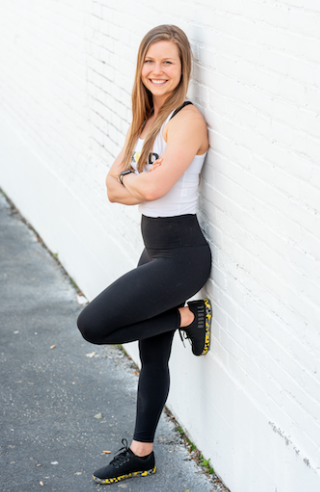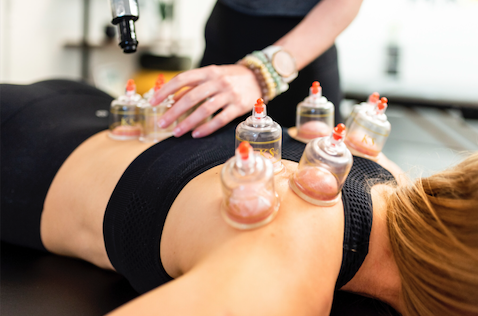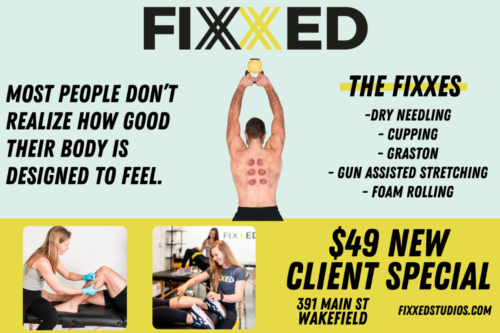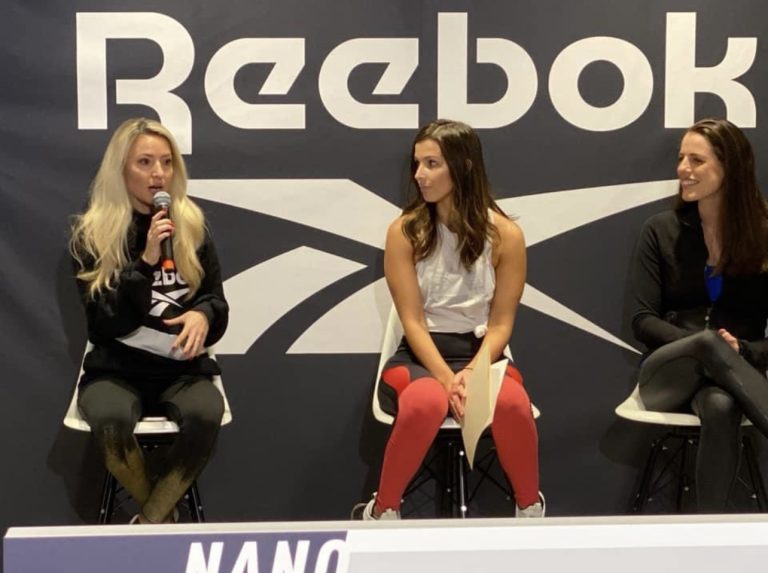We’ve all been seeing cupping marks pop up on professional athletes and Olympic competitors… So what’s the deal?
As a physical therapist and co-founder of a first of its kind recovery studio called FIXXED, my biggest goal is to educate. There are so many great ways to improve your recovery, but most people don’t know where to start. Cupping may seem intimidating at first, but it’s not just for athletes like The Rock or Michael Phelps. Cupping is a recovery technique that is great for everyone, from new moms with shoulder pain from holding your baby, to spin instructors looking to recover after a week of teaching classes. This is a technique that can help you feel your best, whether you do it once a week or once every few months.
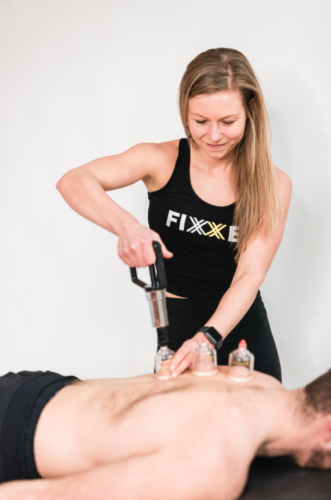
What is cupping?
Cupping is a form of soft tissue release that uses pressure to relieve muscle tension. During a cupping session, cups are placed on the skin to provide suction to the underlying tissue. Suction pulls the skin, underlying fascia, and underlying muscle up into the cup to allow for blood flow underneath. Cupping increases blood flow, promotes relaxation, and decreases muscle tension to allow for improved flexibility and range of motion.
Why do you get cupping marks?
After a typical cupping session, you will have cupping marks, or more recently nicknamed “cupping kisses” that are a result of an increase in blood flow to that area. The color of the marks depends on your skin sensitivity, the amount of pressure applied, and what’s happening beneath the surface. Some sessions result in fairly dark marks, and some sessions result in no marks at all. If you do receive cupping marks, they typically last between 1-7 days after your treatment. Darker areas usually last the longest.
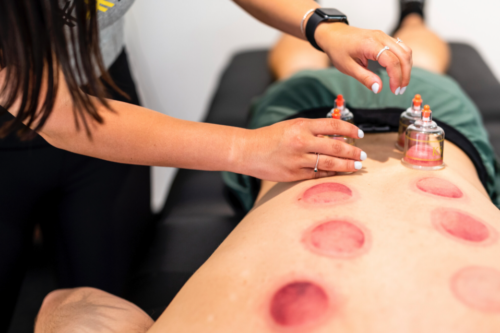
What do the cupping marks mean?
Cupping marks are not only a sign of tissue healing, but can also be used as a diagnostic tool to give us a clearer picture of what’s going on underneath the level of the skin. Darker, more purple areas often indicate areas of greater restriction. As a general rule, the areas of the body that result in the darkest marks are the areas that need the most attention.
How do I know if cupping is right for me?
You don’t need to be crushing crazy workouts to benefit from cupping. The most common areas that we utilize cupping for here at FIXXED are mid and upper back pain and tension, which can be caused by working at a desk, driving, or even from your sleeping position. Cupping can also be used on the shoulders, forearms, hamstrings, quads, and calves to relieve tight muscles. Benefits from cupping therapy also include improved sleep quality, a decrease in headaches, and improved circulation. Anyone who is looking to improve their posture and overall mobility can benefit from cupping.
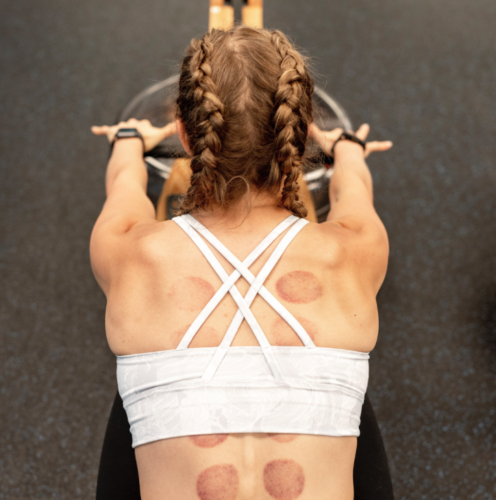
So, where do I start?
Ready to get cupped up? Our main mission at FIXXED is to make recovery options such as cupping more accessible. We are proud to offer cupping, dry needling, Graston technique, assisted stretching, and foam rolling in convenient, 20 minute time slots. The next time you are looking for some self care, come by our location in Wakefield, MA, a quick, 20- minute drive north of Boston. Most people don’t realize how good their body is designed to feel, and we are here to help you thrive!
***
